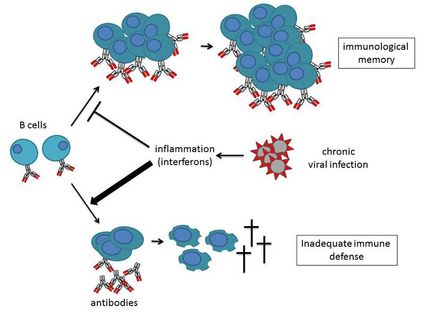Intercell's therapeutic Hepatitis C vaccine meets primary endpoints in Phase II interim analysis
First data from 25 patients reveals statistically significant viral load reduction and very good safety profile
Advertisement
Intercell AG (ICLL) announced the analysis of Phase II interim data for its peptidebased therapeutic hepatitis C vaccine (IC41) in an exploratory clinical study targeting treatmentnaïve Hepatitis C patients. The vaccine comprises eight Tcell antigens and Intercell's firstgeneration polyarginine adjuvant (IC30). It is designed to stimulate Tcell responses against viral protein structures conserved throughout the major HCV genotypes, in order to reduce viral load in the blood of chronically infected patients.
The current study comprises 50 patients chronically infected with Genotype 1 of the Hepatitis C virus, which is known to be very difficult to treat with Interferon/Ribavirin standard therapy. The patients enrolled in the study have not received any other therapy and were given 8 intradermal injections of the IC41 vacine in biweekly intervals for 14 weeks. This intensified vaccination schedule was derived from a recent optimization study aimed at improving the vaccine's Tcell immune response. The desired outcome of the ongoing study is the demonstration of a constant and sustained decline in HCV viral load that is inreased by reiterative vaccinations during the treatment period.
In the current interim analysis, 25 patients have been evaluated in the "per protocol" population. The data obtained shows that the primary endpoint set for this study, namely a statistically significant sustained HCV RNA decline, has been met.
In the second week after the final vaccination, a 40 % reduction of viral load (0.2 log) was observed in comparison to the baseline prior to vaccination. The therapeutic effect of the vaccine on the viral load is small, but found to be significant when data was submitted for rigorous statistical analysis (p=0.0178).
The results are especially significant in the light of the observation that viral load reduction is increasing with the number of vaccinations and is most pronounced two weeks after the vaccination schedule has been concluded. The study included patients with various levels of viral loads. In the subset of patients (N=12) with high viral load (> 2 million copies/ml) before treatment, a statistically significant (p=0.0168) average decline of 60 % (0.4 log) was achieved. Thus, it seems that the therapeutic effect is more pronounced when the patients' immune system is unable to keep the viral load in ceck.
Final results of the study with the full set of patients and an analysis of HCVRNA and Tcell responses until 24 weeks after the last vaccination are expected in early 2008. Furthermore, an extended analysis of how the therapeutic effect relates to the induction of Tcell responses has to be awaited until the final outcome of the trial.






















































